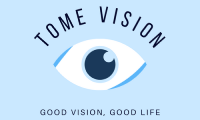Cataracts: Causes, Symptoms, and Treatment
Introduction:
Cataracts are a common condition that affects millions of people worldwide, particularly those above the age of 60. This article aims to provide a comprehensive understanding of cataracts, including their causes, symptoms, and treatment options.
1. Causes of Cataracts:
Cataracts occur when the lens of the eye becomes cloudy, leading to blurry vision and difficulty seeing clearly. Several factors contribute to the development of cataracts, including:
– Aging: As people age, the proteins in their eyes may break down, causing the lens to become opaque and leading to cataract formation. This is the most common cause of cataracts.
– Genetics: Some individuals may be more prone to developing cataracts due to genetic predisposition. If a family member has had cataracts, it increases the likelihood of developing the condition.
– Diabetes: People with diabetes are at a higher risk of developing cataracts due to the fluctuation in blood sugar levels, which can affect the eye’s lens.
– Certain medications: Prolonged use of corticosteroids, such as prednisone, can contribute to cataract formation. Additionally, some medications used to treat certain conditions, like glaucoma, may increase the risk of cataracts.
2. Symptoms of Cataracts:
The symptoms of cataracts may vary depending on the severity of the condition. Common symptoms include:
– Blurred vision: Cataracts cause a gradual decline in visual acuity, making objects appear blurry, hazy, or less vibrant.
– Increased sensitivity to light: Individuals with cataracts may experience increased sensitivity to bright lights and glare, making it challenging to drive at night or read under bright illumination.
– Difficulty seeing in low light conditions: Cataracts can impair the eye’s ability to adjust to dim lighting, making it difficult to navigate areas with limited visibility.
– Faded colors: Cataracts can cause colors to appear duller or less vivid.
– Double vision: Some individuals may experience double vision or see multiple images, particularly in one eye.
3. Treatment Options for Cataracts:
The treatment of cataracts primarily involves surgical intervention. Once the cataracts begin to significantly affect daily activities and quality of life, an ophthalmologist may recommend surgery. Treatment options include:
– Phacoemulsification: This is the most common cataract surgery technique. During the procedure, the surgeon uses ultrasonic vibrations to break up the cloudy lens, which is then removed through a small incision. A new artificial lens, called an intraocular lens (IOL), is inserted to restore clear vision.
– Extracapsular cataract extraction: In cases where the cataract is advanced, a larger incision is made to remove the cloudy lens in one piece. This technique may be preferred if the surgeon needs to insert a more advanced IOL.
– Femtosecond laser-assisted cataract surgery: This advanced technology allows for a more precise and accurate incision, enhancing surgical outcomes.
– Posterior capsule opacification treatment: In some cases, a secondary cataract may develop after surgery when the back of the lens capsule becomes cloudy. This can be resolved through a quick and painless procedure called laser posterior capsulotomy.
Conclusion:
Cataracts are a common condition associated with aging and can significantly impact an individual’s vision. It is important to recognize the symptoms and seek timely treatment options, which predominantly involve cataract surgery. Remember, early detection and appropriate treatment can greatly improve the quality of life for those with cataracts.
